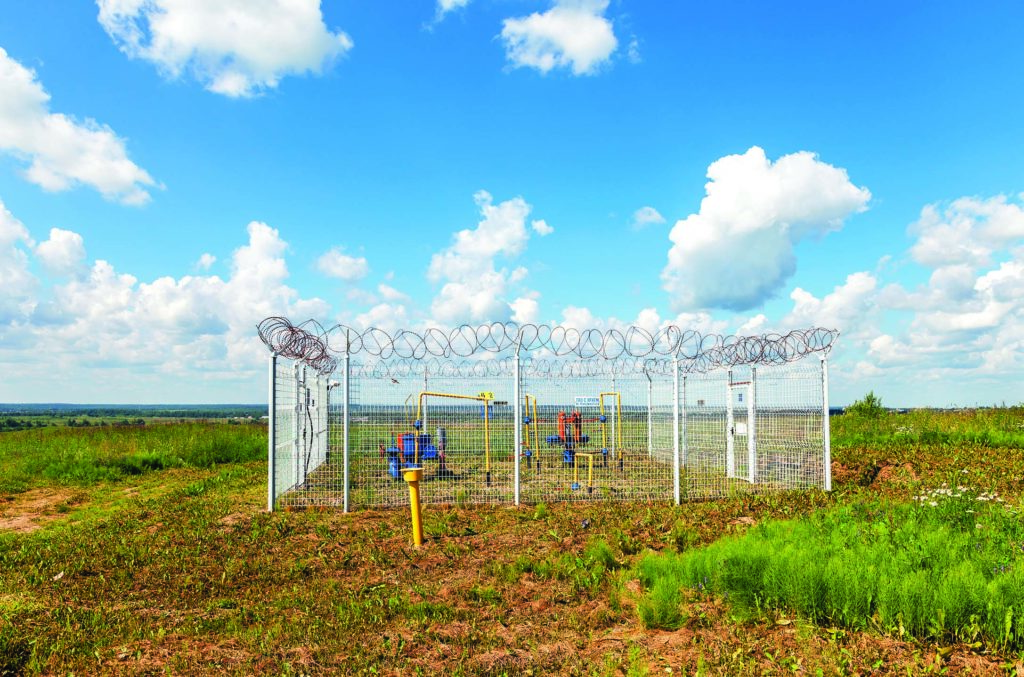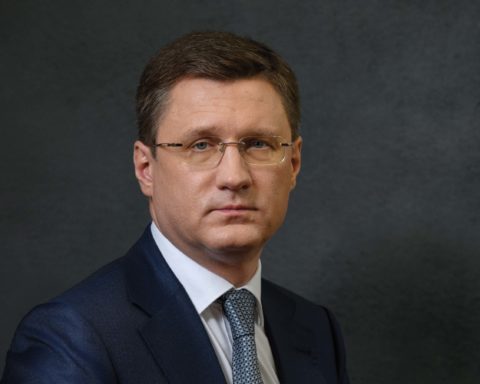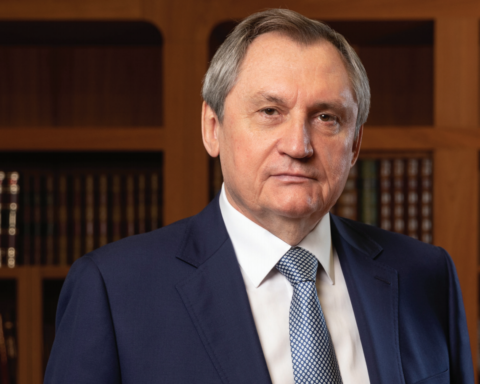Works on gradual improvement of living standards of citizens in all areas of economy have been a constant priority of the Russian state policy in the 21st century. It also covers the increased accessibility of energy resources our country is so reach with for each person. Currently, one of the most promising and clean fuels is gas. Russia owns the largest resource base of this hydrocarbon in the world – about 20 % of proven reserves of the natural gas are located in our country. And it’s critical to use this advantage to the maximum, first of all – for the benefit of citizens of our country. In this regard, over the last few years works on active gasification have been carried out in Russian regions. Some positive results have already been achieved in this area. Besides, today’s agenda includes introduction of a few initiatives that allow accelerating the process significantly and expanding the gasification perimeter. Such an objective was set by President of the Russian Federation Vladimir Putin.
The History of Gasification
It’s the Saratov Region that can be considered a birthplace of the gas industry in Russia, since methane was discovered there as early as in the 19th century. Active exploration of natural gas reserves in the region started in early 1930s. Eventually, as early as in the end of 1940 the first gas flow was derived 75 km away from Saratov, and in April 1941 a development well was staked near Yelshanka settlement which is considered the first gas well in Russia.
During the Great Patriotic War Saratov was actually cut off from major energy resources, which left the Saratovskaya HPP that provided industrial enterprises strategically important for the front line with energy without fuel. Works were carried out at the accelerated pace, so in September 1942 already gas was delivered from the Yelshansk field to the power plant, which allowed solving the problem of energy supply in the region.
In 1946, the first 843 km long trunk gas pipeline Saratov – Moscow was launched which was laid manually by constructors who had overcome 84 passages through rivers and channels and 20 – through railways. Gasification of the capital had a strong multiplicative economic effect letting refuse to consume over 650,000 tons of coal and turf, 100,000 tons of burner fuel and 150,000 tons of kerosene daily. Consequently, the experience of building a gas pipeline from the Volga region to Moscow became a basis for further gas supply in the country. In mid-1950s decrees on gas supply in a few more regions of the USSR were adopted, and at the time the Soviet Union seized to exist, i. e. by early 1990s, a level of gasification in Russia was about 40 % of the country, according to the National Energy Institute.

Source: Amandine26 / Depositphotos.com
Statutory Regulation Nowadays, the term ‘gasification’ is defined in the Federal Law on Gas Supply and implies a set of measures aimed at supplying residential premises and industrial facilities with gas. Meanwhile, not only piped, or pipeline natural gas can be used, but also liquefied hydrocarbon gas or natural gas. The main objective is to provide accessibility of gas for consumers, primarily for their essential needs, such as cooking meals, heating and hot water supply.
According to the law, the gasification process consists of several stages. A procedure for design and implementation of transregional and regional gasification programs is established on the level of the Government of the Russian Federation. Then the process continues on the level of federal executive authorities. The Ministry of Energy of Russia works out and updates the General Scheme for the Development of Gas Industry, including definition of the state policy in field of gas supply, establishment of a promising natural gas balance, and general indicators of gasification development, and monitors implementation of regional and transregional gasification programs. The Federal Antimonopoly Service of the Russian Federation controls prices for the energy resource, while the Ministry of Construction of Russia is in charge of managing issues regarding domestic gas facilities. Entities, in their turn, are to complete the final stage – to develop the gas distribution network in the region and to provide preparation of consumers to gas intake.
Current Situation
By the beginning of 2000s a level of gasification in Russia was about 48 %. I. e. over the last decade, the gasification process has been developing at a rate of less than 1 % per year. However, in 2005 already systematic work with Russian regions was unfolded, and in the period of 2005–2010 its level increased from 53.3 % to 63.1 %. Hence, much more work was done in five years than during the decade of 1990s.

Source: blinow61 / Depositphotos.com
In 2019, a gasification level reached 70.1 %. Nowadays, regional gasification programs are approved in 76 territorial entities of the Russian Federation. A total length of trunk gas pipelines is over 180,000 km, and together with distribution gas pipelines the total length of ‘gas arteries’ of the country is almost 1 mln km.
The largest gas consumers are electric power facilities (about 160 billion cubic meters per year or 36 %) and the population (about 50 billion cubic meters per year or 12 % of the Russian gas demand). Meanwhile, other sectors of the economy, including the gas chemical sector, are also expected to show significant potential of consumption growth, which is an important thing to consider when planning the future of the gas infrastructure. I’d like to note that since 2019, a new calculation method for gasification indicators approved by the Ministry of Energy of the Russian Federation has been operating which allows defining the current and potential gasification level given a fuel and energy balance of the region. With its help entities of the country will be able to estimate how certain events influence on their gasification indicators when shaping their regional programs.
As for gasification of the country in comparison with the abroad, Russia ranks third by a level of gasification in Europe after Netherlands and the United Kingdom. At the average a level of gasification in EU member states doesn’t exceed 47 %. At the same time, the percent of gasification in countries where climate is similar to ours, such as Finland, Sweden and Norway, is 3.3 %, 1 % and 0.2 % respectively. Hence, based on the regional aspect, we have good enough indicators of gas accessibility for the population.
Despite positive average indicators of gasification in Russia, geographically values are quite differentiated. First of all, a level of gas accessibility depends on population density, extensiveness of infrastructure and the amount of industrial consumers. The highest gasification percents calculated in accordance with the method suggested by the Ministry of Energy of the Russian Federation have been reached in the Volga Federal District (87 %), the Central Federal District (85 %) and the North Caucasian Federal District (over 84 %). The least gasified ones are Siberian and Far Eastern Federal Districts, where a level of gasification is about 17 %. Currently, liquefied hydrocarbon gas is actively applied in these regions to supply up to 50 % of residential accommodation. Over 2 million tons of LHG are annually used for everyday necessities.

As regions get pipeline gas, their demand for LHG is gradually reduced, though this kind of fuel delivery still remains a priority for remote and under-populated territories. Also, extended use of liquified natural gas is implied for such entities. In 2014, Gazprom launched the first project of autonomous gasification – an LNG complex with a capacity of 19 million cubic meters of gas per year in the Perm Territory. We expect LNG plants to appear in the nearest future in the Leningrad Region (Baltic LNG), the Tomsk Region and other regions of the country. To activate this process the Ministry of Energy has prepared a few suggestions of legislative and regulatory nature that will allow reducing capital expenditures for construction of small-capacity LNG production plants by 32 % to increase their profitability significantly and, therefore, expend the geographic footprint. Our objective is to use all the way of bringing gas to the population and to apply the individual approach for gasification of a certain region or community if necessary, using alternative methods as well.
Challenges and Prospects
Keeping up the reached gasification pace is currently complicated due to a few challenges. Firstly, the access to the Unified system of gas supply is limited and the throughput capacity of the trunk infrastructure is not sufficient. Secondly, unfortunately, we have to state that the quality of regional gasification programs that are supposed to become a foundation for the process development is often low, and regions themselves fail to perform their obligations. There are also other impacts: proper coordination is lacking, there’s a deficit of sources of funding and a so-called problem of the ‘last mile’ when the process might stop just a few meters from the object of consumption, since the responsibility for bringing gas to the point is shifted from one person to the other due to some administrative barriers. As a result, it’s impossible to define the final executor.
What needs to be done to solve these problems? First of all, development of the trunk infrastructure and its proper application are to be ensured.
For this purpose, decisions on large trunk gas pipelines, as well as on reconstruction and expansion of capacities of gas distribution stations (GDS) need to be made. Take our strategic gas pipeline Power of Siberia launched almost a year ago that does not only have a significant export value, but also should largely enable gasification of regions of the Far East, the Amur Region in particular. To use the existing resource base of gas in Eastern Siberia to the full extent all resources need to be used, including those of independent gas producers. Required efforts are currently made in this area.
Meanwhile, works on completion of gasification in Central Russia are still in progress. This year construction of gas branch pipe Galich – Manturovo – Sharya in the Kostroma Region has started; the final decision on construction of gas branch pipe Rzhev – Nelidovo in the Tver Region needs to be made. Another promising infrastructure project is construction of the trunk gas pipeline Shakhunya – Sharanga – Yoshkar-Ola that will allow providing access to gas for about 200,000 people in three constituent entities of the Russian Federation – the Republic of Marij El, the Kirov Region and the Nizhny Novgorod Region. And such projects on infrastructure development need to be made consistent. I’d like to note that, when it comes to gas supply for industrial facilities, it’s rather advised to work out the ‘take and pay’ principle, i. e. enterprises must calculate the volume of gas they need and consider payment for it a part of their expenditures. Otherwise we can come to quite expensive excessive unused capacities and, therefore, increased expenditures for all consumers.
As for functioning of regional gasification programs, nowadays the situation looks the following way: Gazprom hook up the gas supply to a settlement, i. e. the company is in charge of trunk and inter-settlement networks, while getting gas straight to the consumer is the task of local authorities. The population carries the cost loading for construction of distribution networks in the settlement, purchase and installation of domestic gas facilities, as well as for connection to gas distribution networks. Such a system puts a significant load on regional budgets and on consumers directly, so it needs to be changed.
It is planned to strengthen coordination of Gazprom and regional GDCs on the level of constituent entities when working out programs in the entities, and to consider regional gasification programs when regulators make decisions on tariffs in a mandatory manner. All of it will allow entering a qualitatively new level of development and implementation of regional gasification programs.
Considering the process of connecting to networks from the consumer’s point of view, it’s obvious that nowadays getting gas is quite a difficult task for a citizen, and the situation can’t be called trouble-free. Unfortunately, quite a complicated system is built – both in terms of requirements for documentation and the terms. To lay gas to one’s house, the consumer has to pass a whole nine stages and collect numerous documents. Meanwhile, the average term of getting connected for the population amounted to 237 days in 2019.
We suggest creating a Unified regional operator based on gas distribution organizations as a brand new approach to the gasification process. It will supervise implementation of the entire chain of gasification events, including the ‘last mile’. As a result, the hook up procedure should be reduced to three stages as a one-stop solution that can be represented with a Multifunctional Public Services Center or an office of a Unified regional operator.
Such an approach will eliminate a lot of administrative barriers, increase transparency and be convenient both for the consumer and the state as a regulator of the process. Regional gasification operators could provide administrative support on collection and execution of documents to the subscriber in the framework of such a structure. Besides, it’s necessary to provide for an opportunity of submitting the application to hook up the gas, sign up the contract for gas supply and technical maintenance online. Thus, the period from the moment of application submission till the launch of gas at the object will be reduced up to 135 days.
We expect a new principle to allow reducing the cost of hook up for as many subscribers as possible. This indicator is already pretty high though. For example, only in 2019 47.4 % of subscribers were provided with gas at the price of 20,000 to 50,000 rubles. I’d like to remind that at the moment this category includes subscribers that consume no more than 15 cubic meters per hour. As for the population, it’s up to 5 cubic meters per hour. Besides, there were also about 44 % subscribers who didn’t require gas pipelines to constructed to reach their land plots, so gas was hooked up for them at the average price of 53,000 rubles.
Therefore, in summary, to continue successful work on gasification of our country a relevant fuel energy balance needs to be formed for every region and a need for gas is to be defined based on this balance. Then a regional gasification program needs to be approved for the constituent entity of the Russian Federation considering all revenue sources.
In total, according to pre-estimate of Gazprom, it will take about 1.915 trillion rubles to implement gasification programs. It’s definitely a significant sum, though it’s critical to ensure necessary revenue sources, since gasification is one of the main social objectives of the country. In this regard, in our opinion, it’s impossible to make do with Gazprom’s funding only. Implementation of the entire set of expenditures for gasification, including construction of trunk infrastructure, inter-settlement and intrasettlement gas pipelines and input pipelines at the expense of the Gazprom investment program in the current global market condition will require significant resources which will result in shortfalls in income of the federal budget. That’s why currently additional funding sources are considered.
The Ministry of Energy will provide methodologic support on all levels of establishment of a new gasification process. For this purpose, in particular, a special Center for Gasification Promotion was created on the basis of the Russian Energy Agency with a key objective of making particular recommendations on a regional level and spreading the best practices. We also think that an issue of introducing the system of multilevel monitoring and control over implementation of the gasification program needs to be raised. For instance, it can be a key performance indicator (KPI) mechanism for governors. If necessary, additional initiatives and incentives will be worked out to accelerate gasification of the country and bring this level to a target indicator of 83 % by 2030. Eventually, our shared goal is to provide quality, speed and simplicity of getting a service for the population while maintaining minimum costs.






